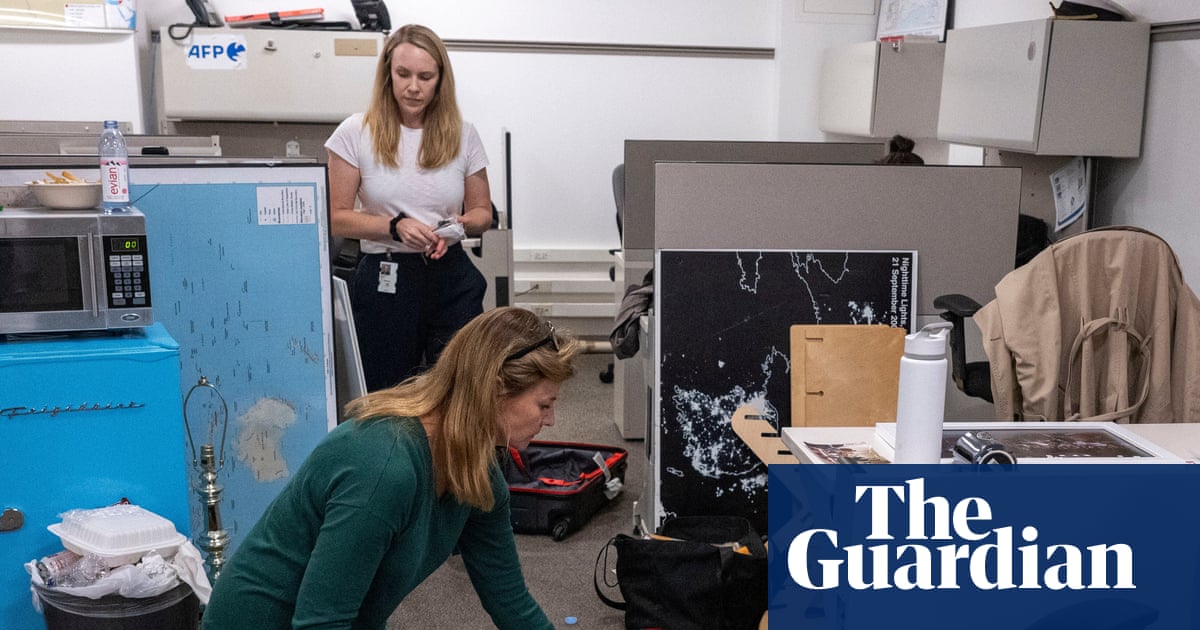Few city rats have left their mark on the public consciousness — and the urban landscape — like the one responsible for the famed “Chicago rat hole.” (“Pizza Rat” is a notable exception.)
But the Windy City’s “rat hole” may not be what it seems.
New research into the identity of the creature that caused a sidewalk imprint when it fell into freshly poured cement suggests the culprit is an entirely different city dweller.
Much lore surrounds the Chicago rat hole, also dubbed “Splatatouille” during a public naming contest.
No one seems to know when the mark first appeared in Chicago’s Roscoe Village neighborhood, but it’s believed to have been there for at least two to three decades. However, one tweet from Chicago artist, writer and comedian Winslow Dumaine on January 6, 2024, transformed it into a social media sensation: “Had to make a pilgrimage to the Chicago Rat Hole,” he shared in a post on X, along with a photo.
Winslow Dumain
It soon became Chicago’s hottest selfie spot and people left offerings of coins and other items — a couple reportedly even tied the knot next to the mark. Complaints from neighbors led the Chicago Department of Transportation to remove and replace the sidewalk in April 2024.
But a key question lingered: Was it really a rat that made the mark?
The public curiosity about the imprint inspired Dr. Michael Granatosky, an assistant professor in ecology and evolutionary biology at the University of Tennessee, Knoxville, to take up the investigation.
“What a great way to get the public excited about nature and the world around them,” he said.
Using a similar method as the one scientists follow to determine the animals responsible for fossilized footprints — but with a dose of lightheartedness — Granatosky and his colleagues carried out the first scientific analysis of the imprint, published Tuesday in the journal Biology Letters.
The team was able to rule out a rat entirely based on its research, finding that a multitude of features point to a squirrel as the culprit.
“What we wanted to demonstrate is how difficult it is, even when you’re given a near-perfect scenario, to make really good findings off of these imprints,” Granatosky said.
A rodent lineup
When Granatosky began investigating, the public assumption was that a brown rat, commonly found in Chicago, was responsible for the full-body impression. But the city had already reclaimed the cement chunk, so it wasn’t available for direct study.
Instead, Granatosky and his team made measurements of the rat hole using images taken of it, including from snout to tail, head width, the base of the tail and the length of the identifiable fingers and claws.
The team collected museum specimens for the brown rat, house mouse, Eastern grey squirrel, Eastern chipmunk, muskrat, white-footed mouse, fox squirrel and Southern flying squirrel, making anatomical measurements of each for statistical comparisons. The specimens ranged in age and size.
The team’s initial analysis narrowed the results down to an Eastern grey squirrel, a muskrat or a fox squirrel, based on the imprint’s elongated forelimbs and the length of its hind paws, as well as the third digit on each paw — all of which exceeded known measurements for brown rats.
A fox squirrel is seen eating seeds in California's Crystal Cove State Park. - blickwinkel/Alamy Stock Photo
A fluffy grey squirrel stops in a park in the town of Maidenhead, in England's Berkshire County. - Maureen McLean/Shutterstock
“The multitude of all the features together sort of led us down the avenue of the squirrel,” Granatosky said. “Squirrels tend to have longer digits because they’re arboreal, and that came out as a pretty strong feature.”
For those wondering why the tail imprint appears so ratlike, it’s because the fine hair of a squirrel’s tail is unlikely to leave behind any trace, the study authors said.
Eastern grey squirrels are more common in Chicago than muskrats or fox squirrels, which led the team to determine there’s a 98.67% likelihood that the rat hole was actually a squirrel hole, and a 50.67% chance it was, more specifically, an Eastern grey squirrel hole.
A muskrat is pictured on a lakeshore in Allgaeu, Germany. - Dieter Hopf/imageBROKER/Shutterstock
Brown rats are commonly found across the globe. - Dieter Hopf/imageBROKER/Shutterstock
A rat hole by any other name
The findings align with what Dr. Seth Magle, senior director of the Urban Wildlife Institute at Chicago’s Lincoln Park Zoo, initially suspected about the imprint. Magle was not involved in the research but was one of the reviewers of the study.
“I mean, clearly it’s one of the important scientific studies of our lifetime,” Magle joked. “When I saw this paper, I was a little surprised that someone wanted to go to this much effort to really put this topic to rest, but maybe I shouldn’t have been because I think this is the kind of research that really does capture the public’s imagination.”
When the Chicago rat hole went viral, Magle and his team considered how the mark was made. They realized the animal would have fallen or needed to be dropped from a distance, given that there were no paw prints leading to the imprint, he said.
And there were no drag marks — the animal seemed to have fallen from the sky. Magle has seen plenty of squirrels fall or leap from trees while walking in the city. The team also considered that the concrete was likely to be wet during the day, after being freshly poured, and drier at night, hours later. Squirrels are active during the day, while rats are largely nocturnal.
However, when Magle shared his thoughts with media outlets during the rat hole’s peak days of viral fame, he caught heat for his theory because many stood by the idea that it was a rat and nothing else.
“I feel vindicated that their much more analytical, much more quantitative and precise assessment matched up with our ecological thinking about what would be likely to create a mark like that,” Magle said.
The study authors suggest that the hole “be rechristened the ‘Windy City Sidewalk Squirrel’ — a name more fitting of its likely origins and more aligned with the evidence at hand.”
But the city may not be so willing to embrace this change.
“With great respect to the scientific community, the Rat Hole is part of Chicago lore now, much like the Sears (Willis) Tower and Comiskey Park (Rate Field),” said Ryan Gage, director of public affairs for the city of Chicago’s Department of Streets and Sanitation, in an email. “We aren’t so sure people will be swayed by the study to refer to it as anything else.”
While not currently on display, the rat hole is awaiting a permanent home before it will be available for public viewing, Gage said, adding that the concrete slab is safe and intact after being removed from its sidewalk home.
The imprint is currently not on display to the public. - Chicago Department of Streets and Sanitation
Dumaine, whose post on X originally rallied people around the rat hole, said he accepts that it is a squirrel hole. He applauds the scientists who wrote the paper — although he doubts the discovery will change the name for most people.
“Marilyn Monroe wasn’t her real name, but Norma Jean still captured the heart of the world,” Dumaine wrote in an email. “The rodent responsible for the Chicago Rat Hole does not need to be a rat to accomplish the very same.”
He said calling it a rat hole, more akin to a den of iniquity than a cozy squirrel’s nest, was what made it resonate with people.
“I believe that the people who responded positively to the Chicago Rat Hole were likely beleaguered by the relentless flood of horrifying news, increasing prices, stagnant wages, and the brutal winter cold,” Dumaine added. “I believe there is a kinship among the discarded, and celebrating a dead rat was a way of saying that, like all reviled creatures, we, too, deserve to be celebrated.”
Life in an urban jungle
Things like paw prints left in cement and the Chicago rat hole serve as a reminder of urban ecology, or the study of how animals, plants and humans interact within city environments, Granatosky said.
When Magle started working in urban ecology nearly two decades ago, he recalled other scientists didn’t find the field as interesting and questioned why he would want to study pigeons, rats and coyotes rather than wading through the Everglades or researching species deep in the woods. But he often noticed public interest around animals and their behavior within cities.
“I thought, why not study the animals that are there, where the people are, the animals that are doing things that matter to most people,” Magle said.
Dr. Elizabeth Carlen, a postdoctoral fellow in the department of biology at Washington University in St. Louis, said the imprint epitomizes the value of using science to answer questions. Carlen, who did not participate in the new study, said she believes the authors “did an excellent job determining what species made this impression.”
The investigation reminded her of previous studies in which researchers asked “where did this come from?” to determine the basis of alleged yeti fur or spiral horns believed to belong to a new species of ox.
“While these studies may seem silly, playing on pop science sensations, they offer the public a glimpse into the scientific method,” Carlen said. “What if this impression was a fossil? Paleontologists would go about identifying the organism that created the fossil in the same way.”
Meanwhile, a key question endures about the Chicago rat hole — the fate of the animal that made it.
There is no evidence that the squirrel that fell into the cement walked away. It was likely dropped by a bird of prey or fell from a tree, then taken away by a predator, removed by someone or decayed on the spot — although there are no remains left behind.
Sign up for CNN’s Wonder Theory science newsletter. Explore the universe with news on fascinating discoveries, scientific advancements and more.
For more CNN news and newsletters create an account at CNN.com

 German (DE)
German (DE)  English (US)
English (US)  Spanish (ES)
Spanish (ES)  French (FR)
French (FR)  Hindi (IN)
Hindi (IN)  Italian (IT)
Italian (IT)  Russian (RU)
Russian (RU)  4 hours ago
4 hours ago






























Comments